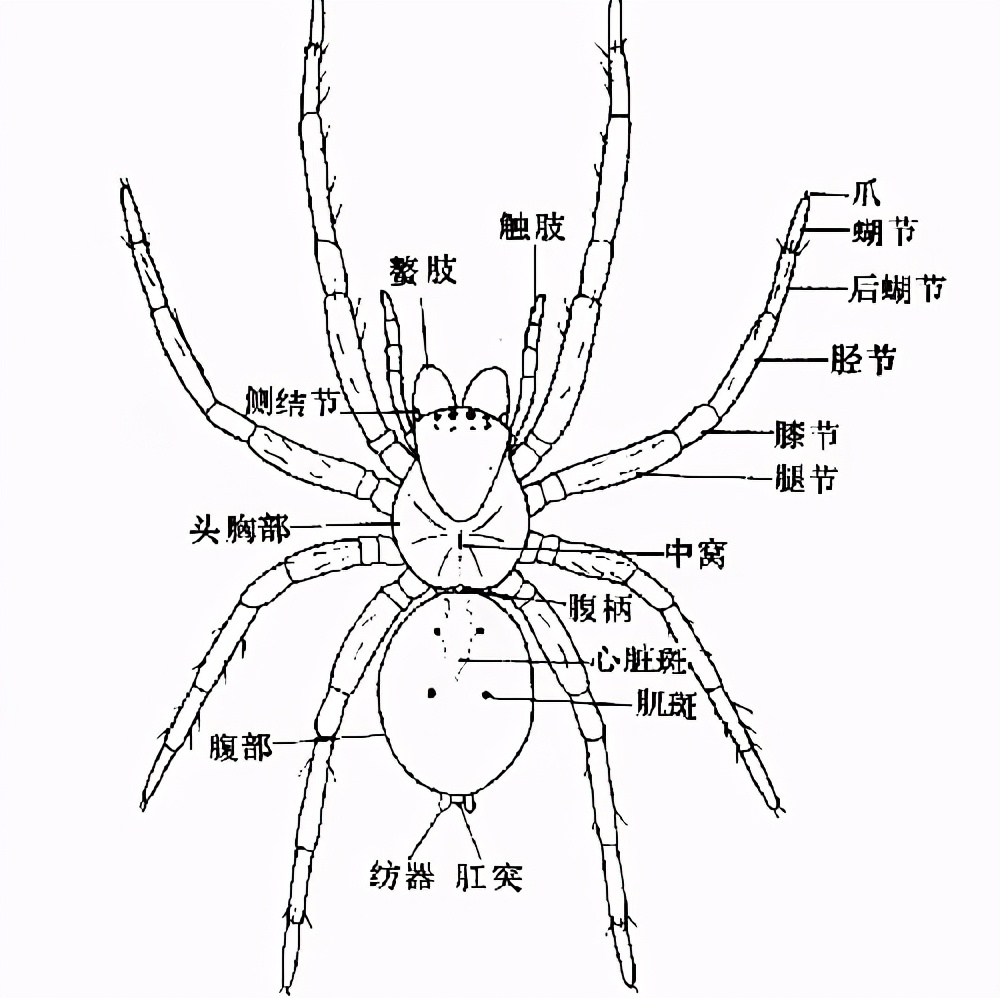Walking on the road, you will often be stuck to your face or hands with spider webs, and you will see spider webs formed in the corners of walls or between leaves or branches. Insects can sometimes be seen entangled in cobwebs and running precariously. That day was the day of the spider's predation. It usually takes about 1 hour to carefully make spider webs and maintain maintenance of spiders. Ordinary insects cannot escape as long as they are caught by spider webs woven by spiders once, so they will become spider food, so spiders will also be caught by spider webs made by themselves?
How are spider webs formed?

Before investigating whether spiders fall into spider webs, look at how spider webs are made. The popular hero in the movie, Spider-Man, who made a spider-themed production, will first raise his wrist in order to make spider webs. But in fact the spider does not have a wrist. The spider is divided into two parts, the head, thorax and stomach, with four pairs of eyes and legs on the head. The first pair looks like legs, but they are tentacle legs that act as tentacles.
In addition, the spider does not pull the spider web from the wrist like Spider-Man, but there is an organ called a spinning device around the anus behind the abdomen, where the spider web is generated. The protein in the form of an elastic liquid in the spider's body passes through the pipe connected to the spun by protruding from the spindle, removes the liquid component, and the acid substance formed binds to the protein to form a hard spider web with good elasticity, which appears in the world through the spun. The elasticity and elasticity of the spider web is very good, 3 to 4 times more than the original length, and more than 5 times stronger than steel.
Species of spider webs and spider nests
Spiders carefully weave spider webs through their spinning machines to make spider nests, and other insects will be found by spider webs when they pass by, so as to prey on them, or play a role in protecting the spiders themselves. The types of spider webs used to make spider nests can be divided into two types. Horizontal and vertical webs
In general, the horizontal webs of spider webs are sticky, and the vertical webs are non-stick lines. Although the spider web generated by the spider's spinning machine is not a sticky spider web, the reason why the spider's horizontal line is sticky is that the spider's sugar protein forms sticky water droplets. If the insect is covered with sticky water droplets, the insects stuck in the spider's web cannot be freed from the spider's web.
The species of spider nest
Most spiders are radially built with a limited amount of spider webs, as well as funnel-shaped spider nests (Funnel Web) or seemingly randomly entangled spider nests (Tangle Web) shapes. Especially the entangled spider webs, because the spider deliberately makes the spider web into an irregular pattern, so other insects such as ants and crickets are difficult to distinguish as spider nests, so it is easier to be found by spider webs.
Can spiders really get entangled in spider webs?
After reading the previous article, we know that slimy spider webs and ordinary spider webs are mixed together to form a variety of spider webs. So how exactly did spiders get entangled in spider webs? While no definitive answer can be found, several meaningful experimental results can be found.
During this time, many scientists said that the spider will generally be stained with sticky mucus on the horizontal spider web, the vertical spider web will not, and the spider will only step on the vertical web when it is active, so it will not be entangled because of the sticky horizontal web.
But scientists at the Smithsonian Institute for Tropical Research in Costa Rica have offered different opinions through careful observations and experiments on spiders. Because spiders generally follow non-stick ropes, there is usually no big problem, but because there are new spider webs or food that needs to be corrected, they will walk on sticky spider webs. In fact, when weaving a spider web, the spider will step on the sticky horizontal web an average of 1000 to 1500 times.
Spider leg enlargement
Moreover, when walking on such a slimy spider web, the reason why it does not stick together is the densely hairy hard hairs on the feet. Because this steel hair on the spider's leg can reduce the mucus and friction area, it plays a role in preventing sticky sticking to the leg.
Not only that, but spiders are also very careful when walking on sticky ropes, and in order to prevent being entangled in sticky spider webs, spiders always carefully step on spider webs with their toes. But spiders also make mistakes. Stuck unable to move because of inattention or mistakes, slowly pull your legs through the spider's mouth, carefully detaching from the web.